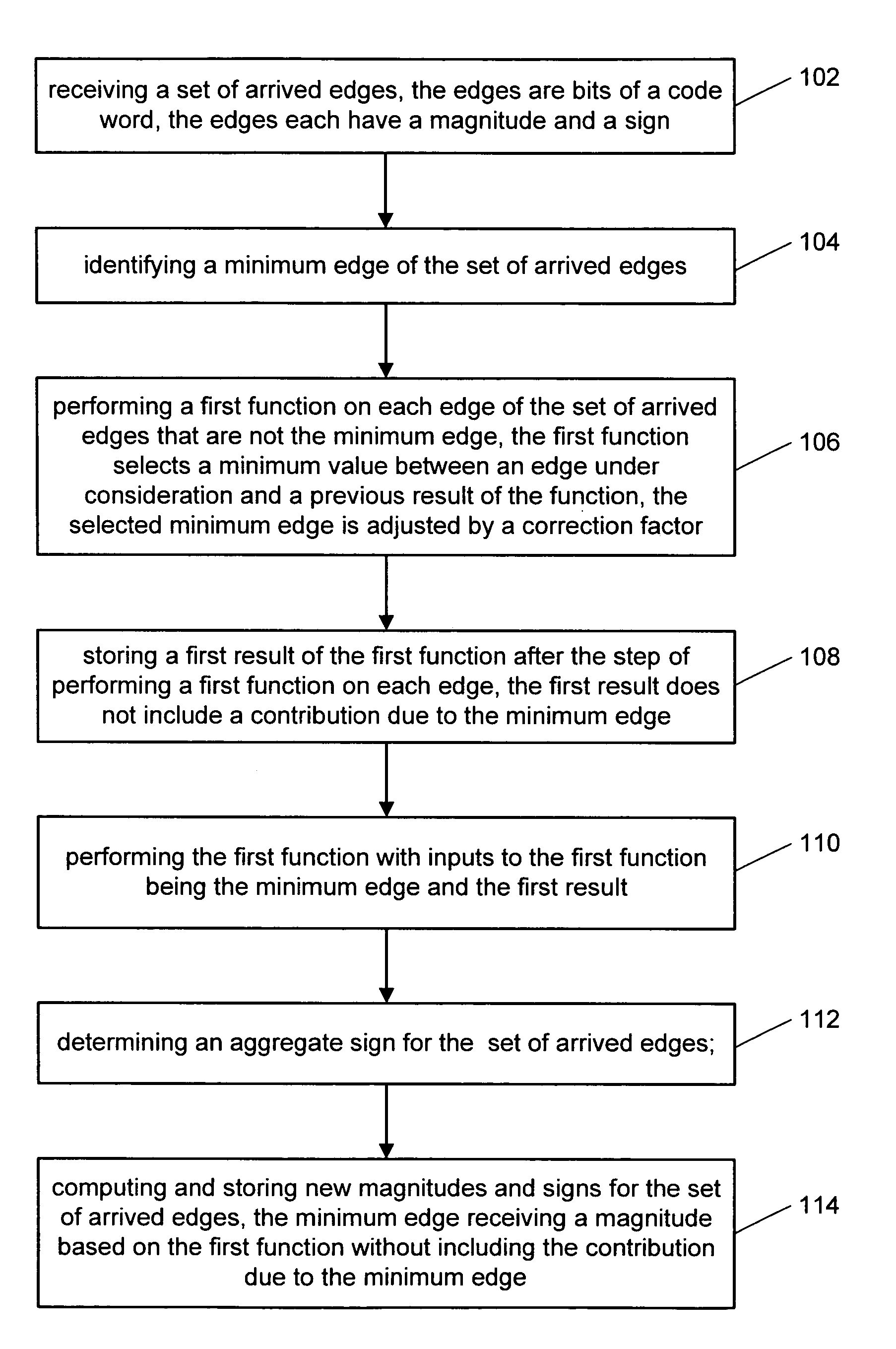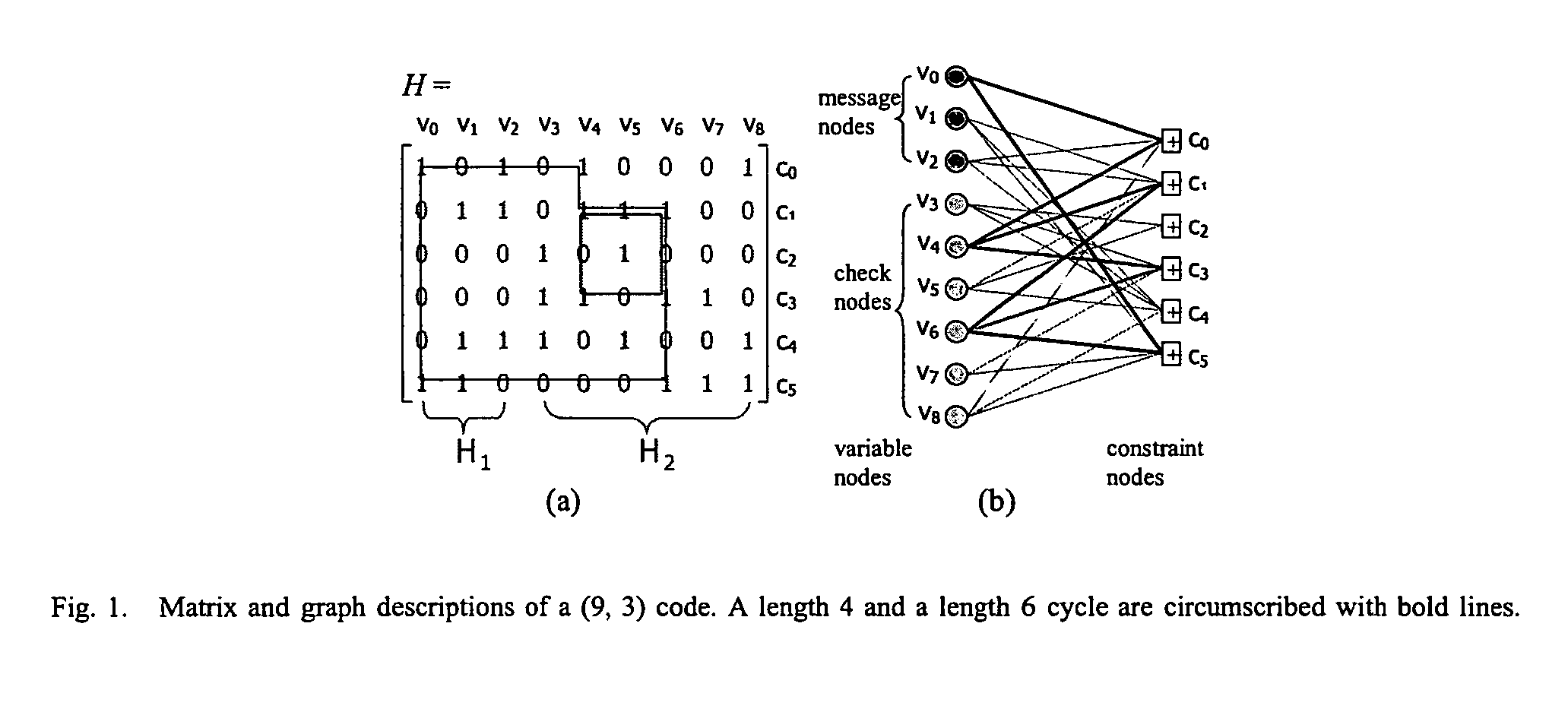Decoding low density parity codes
a low density parity and code technology, applied in the field of decoding low density parity codes, can solve the problems of forward error correction, data being communicated can be corrupted, wireless data (e.g. digital or analog, voice or non-voice) is subject to noise, etc., and achieves the effect of little or no performance loss
- Summary
- Abstract
- Description
- Claims
- Application Information
AI Technical Summary
Benefits of technology
Problems solved by technology
Method used
Image
Examples
Embodiment Construction
I. LOW-DENSITY PARITY-CHECK CODES
[0028]Like turbo codes, LDPC codes belong to the class of codes that are decodable primarily via iterative techniques. The demonstration of capacity approaching performance in turbo codes stimulated interest in the improvement of Gallager's original LDPC codes to the extent that the performance of these two code types is now comparable in Additive White Gaussian Noise (AWGN). The highly robust performance of LDPC codes in other types of channels such as partial-band jamming, quasi-static multi-input multi-ouput (MIMO) Rayleigh fading, fast MIMO Rayleigh fading, and periodic fading is evidenced in C. Jones, A. Matache, T. Tian, J. Villasenor and R. Wesel, “LDPC Codes—Universally Good for Wireless Channels, “Proceedings of the Military Communications Conference, October 2003,” and C. Jones, T. Tian, A. Matache, R. Wesel and J. Villasenor, “Robustness of LDPC Codes on Periodic Fading Channels,” Proceedings of GlobeCom, November 2002.
[0029]LDPC codes are...
PUM
| Property | Measurement | Unit |
|---|---|---|
| Density | aaaaa | aaaaa |
| lengths | aaaaa | aaaaa |
| weight | aaaaa | aaaaa |
Abstract
Description
Claims
Application Information
 Login to View More
Login to View More - R&D
- Intellectual Property
- Life Sciences
- Materials
- Tech Scout
- Unparalleled Data Quality
- Higher Quality Content
- 60% Fewer Hallucinations
Browse by: Latest US Patents, China's latest patents, Technical Efficacy Thesaurus, Application Domain, Technology Topic, Popular Technical Reports.
© 2025 PatSnap. All rights reserved.Legal|Privacy policy|Modern Slavery Act Transparency Statement|Sitemap|About US| Contact US: help@patsnap.com



